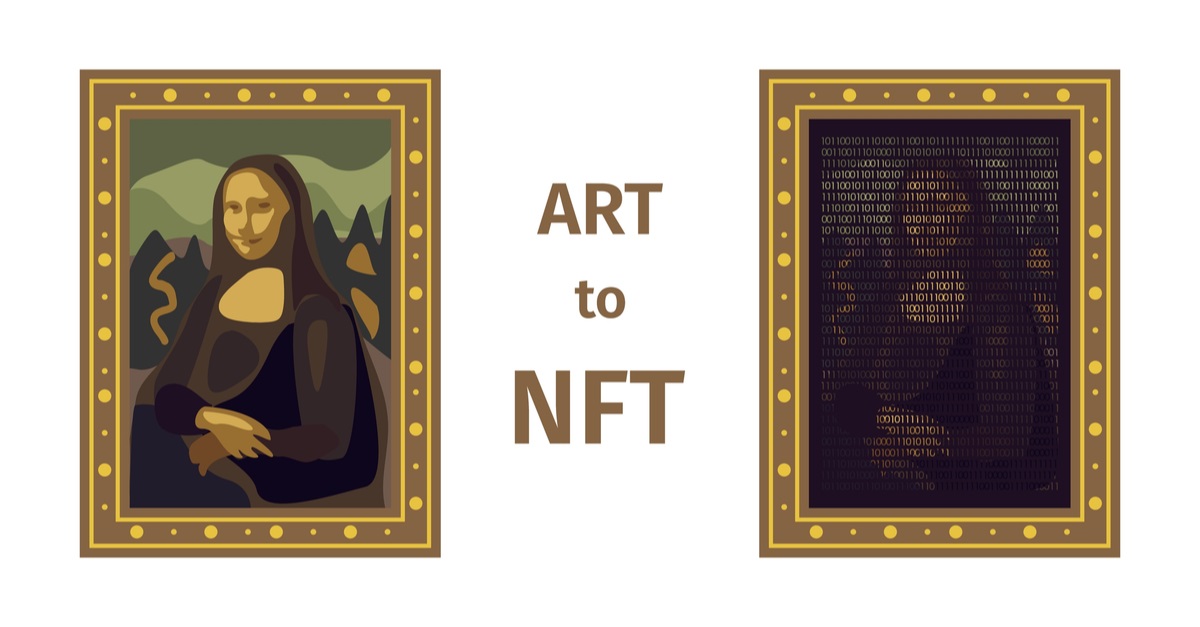

The million-dollar world of “NFTs” – Basics you need to know!
In the digital world of social media platforms – you come across NFTs everywhere. It has even become Collins English Dictionary´s word of the year in 2021. But do you actually know what those three letters truly stand for?
In the digital world of social media platforms – you come across NFTs everywhere. It has even become Collins English Dictionary´s word of the year in 2021. But do you actually know what those three letters truly stand for?
What is a “NFT”? The meaning behind the three “gold” letters
In general, traditional artworks such as paintings (i.e. Mona Lisa) are valuable because they are one of their kind. Contrary thereto, digital content can easily duplicated thousands of times. The question therefore is: How to own and protect such digital artworks? And the answer is via NFTs.
NFT is an abbreviation for „Non-Fungible-Token” and stands for a digital ownership certificate. It manifests one’s ownership of digital content, such as of original versions of videos, pictures, GIFs or even tweets. The certificate (so-called token) can then be further traded in an auction, or the owner can grant a usage license to others. All these transactions seem to be similar to the marketplace with traditional artworks. However, in comparison to traditional artworks, the certificate does not bear a copyright. The owner only holds the digital token representing the artwork, but not the artwork itself. Another distinction is that the sales are usually made in crypto currencies.
The transaction and official database of owners is then stored on a publicly available ledger called “blockchain”. To sum it up in an easy way: the NFTs are a new sort of “bitcoin” – only not covering digital currency, but digital collectables.
Most famous NFT sales – alias NFT as a source of fortune?
In the age of social media where videos, pictures and GIFs can quickly be shared and go viral– such content does not only make the creator famous within few clicks, but, can also be a source of great fortune. Currently, one of the so far most successful and well-known NFT sales was the clip of “Charlie bit me”. Even though the plot of the video is actually very simple – portraying a baby Charlie biting his brother Harry´s finger – for over the past 14 years the clip has become one of the most looked at videos on YouTube with over 885 million views. And in 2021, the clip then made a record sale when it was sold as a NFT for incredible 588.000 EUR!
However, “Charlie bit me” is not the only example of a great NFT deal – also other NFTs are currently worth millions. To name few other great sales – the famous “Nyan Cat” GIF was sold for ca. 656.000 EUR, the original picture of the so called “Disaster Girl”, Zoë Roth, for ca. 400.000 EUR, the “Overly-Attached Girlfriend” image for ca. 388.000 EUR and the “Side-eyeing Chloe” image for ca. 72.000 EUR. But, not only pictures can be sold as NFTs – for example the co-founder of Twitter, Jack Dorsey, has sold his first ever tweet for approx. 2,7 Million EUR.
Also, in March 2021 the traditional auction house Christie´s held the first digital-only art auction for the purely digital NFT based artwork “The Frist 5000 Days” by the American graphic designer Beeple. The artwork – a collage of thousands of individual daily images – was sold for unbelievable 65,5 Million EUR, positioning the artist among the three most valuable living artists of our time.
The downside of NFTs and legal protection
The NFTs have been around since 2014, but only now they are gaining public awareness – especially in the arts sector. However, the million-dollar business also has some downsides. Many experts question the actual durability and risks accompanying this business as it can “disappear” any time causing monetary damages. Next, the NFT - such as bitcoins - also face some critics with respect to its environmental impact as to maintain the blockchain and to enable the payment in crypto currencies, the process requires a vast amount of energy and resources.
Legal protection in Germany
As stated above, the certificate does not grant its owner a copyright to the artwork with respect to a legal standpoint. The NFT itself does not fulfil the requirements set by the German Copyright Act on “personal spiritual creation”. Also, German copyright is not transferable (as in other countries, e.g. the US). As a result, only the actual artwork enjoys the copyright protection under German law, not the NFT itself. Therefore, the creator of the artwork remains its copyright owner – but by selling the NFT he can grant usage rights (e.g. via a license).
It remains to be seen if and how the protection will change within the next years. LexDellmeier if following the changes and will report on different aspects of NFTs in the upcoming blog articles.
#nft #nfts #copyright #monalisa #artwork #nontangiblefunds #licensing
Related
- "Neuschwanstein" is not a trademark!
- 1 December 2017: Madrid Monitor takes its place as the one and only tool for tracking international trademarks
- 1 January 2020 - Changes in Classifications - Trademarks, Designs, Patents and Utility Models
- 100th Anniversary of Bavaria (Germany) - A glance at trademarks, start-ups, innovation & events
- 10th Anniversary Edition - 10 Things to Know about LexDellmeier - Past, Present & Future
- 14 June 2013: Munich Patent Law Conference - Calculating Damages in Patent Infringement Cases
- 15 Top Brands - Interactive Brand Rating - Years 2000 - 2018
- 15 Years LexDellmeier - 2024 New Year Wishes
- 2014: Statistics for Community Trademarks
- 2024 World IP Day - Building Our Common Future with Innovation and Creativity
